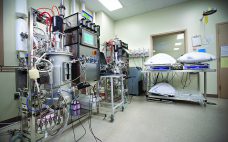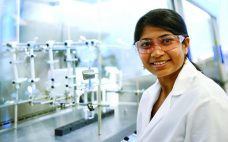Every September, we editors step onto a virtual slide that takes us into the new year with increasing steepness and velocity. Here come the fall supplements and special projects! And as the new year approaches, our momentum is often halted abruptly by the November and December holiday schedules, during which many of our contacts seem to vanish. The highlight of our fall season is always the BioProcess International Conference and Exposition in Boston, this year occurring the very week that…
Friday, October 14, 2016 Daily Archives
October Spotlight
Adaptive Pathways Pilot Program Results A final report became available this past summer about the European Medicines Agency’s (EMA) pilot project on developing medicines for unmet needs. The project showed that adaptive pathways can bring multiple stakeholders together — including regulators, health-technology assessment (HTA) bodies, healthcare professionals, and patients — to evaluate drug development and data gathering. Adaptive pathways allow for a planned, progressive approach to bringing medicines to patients. The concept makes use of existing approval tools (e.g., conditional…
Biosimilar Therapeutic Monoclonal Antibodies: Gaps in Science Limit Development of an Industry Standard for Their Regulatory Approval, Part 1
Biosimilars are biologically derived pharmaceuticals intended to have clinical similarity to a legally marketed innovator product when that product’s patent or market exclusivity has expired. By contrast with generic small-molecule drugs, clinical performance of a biologic pharmaceutical is a function of its structural complexity and higher-order structure (HOS). Biomanufacturing controls of such complex products cannot fully ensure chemical similarity between an innovator product and putative biosimilar because minor differences in chemical modifications and HOS can significantly alter a product’s safety…
Viral Risk Evaluation of Raw Materials Used in Biopharmaceutical Production
Ensuring a continuous supply of safe medicines to patients is a key objective for both health authorities and the pharmaceutical industry. A critical component to that end is maintaining a reliable supply of qualified raw materials (RMs). Manufacturers must ensure not only the suitability of RMs for their intended use in a manufacturing process, but also their highest attainable safety with regards to viruses and other adventitious agents. The need to apply a risk-based RM control strategy is in line…
Emerging Technology Trends in Biologics Development: A Contract Development and Manufacturing Perspective
For a contract development and manufacturing organization (CDMO), process development and manufacturing of recombinant proteins must be linked because of tight timelines driven by client expectations. Those are in turn driven by a need for rapid progression to clinical testing. Early in process development, the choice of raw materials needs to reflect existing supply chain and manufacturing infrastructure, but remain suitable for scaling up to meet future needs. One approach is to establish platform processes for a class of molecules…
Selective and Flexible Chromatography Media: Improving Biopharmaceutical Operational Efficiencies
Continuing development in protein and peptide engineering have produced a broad range of new biological products with improved therapeutic and diagnostic potential. In the development pipeline, more than 900 biologic products target more than 100 diseases (1). Increased manufacturing complexities caused by closely related impurities and requirements to improve process efficiencies and reduce operating costs highlight the need for new approaches in protein purification. Platform-based chromatographic approaches have been successfully applied in separating and purifying monoclonal antibody (MAb) products. But…
Viral Clearance in Antibody Purification Using Tentacle Ion Exchangers
Manufacturers strive toward cost-effective purification of target molecules and a high level of confidence that their biologics are safe and not compromised by the presence of endogenous retrovirus-like particles or adventitious viruses (1). Reliable reduction of viral particles throughout downstream purification processes must be ensured through different techniques such as chemical treatment, filtration, and chromatography. Common monoclonal antibody (MAb) purification schemes use both cation- and anion-exchange chromatography steps (CEX, AEX). Although CEX (to remove product- and process-related impurities) is not…
Validation of Controlled Freezing and Thawing: A 9-L Bottle Study
Freeze–thaw processes affect the quality of biopharmaceutical proteins (1–13) and human cells (14). It has been reported that no method consistently controls freezing and thawing rates for biological formulations (1). My recent study refutes that claim with validated rate-controlled freezing and thawing of such formulations in 16-L single-use bags (15). The study reported herein presents a consistent method for controlled-rate freezing and thawing of bottled formulations. It also highlights the effect of load and container position on freeze rates. The…
Collaboration Is Key to Innovation in Biotechnology
A new report from Thomson Reuters shows that innovation in biotechnology declined slightly in 2015, and biotech is the only one of a dozen worldwide industries examined to show that kind of decline (1). To measure innovation, compilers used metrics such as patents filed and scientific literature cited. Looking at the details, however, the dip was just a 2% drop from 42,584 events in 2014 to 41,624 in 2015. The same dynamics had revealed a 7% increase in innovation from…
Ask the Expert: Christoph Herwig on Acceleration of Bioprocess Development Using DoE and Physiological Control
Acceleration of Bioprocess Development Using DoE and Physiological Control with Christoph Herwig Understanding the interdependencies among process variables, product quality attributes, and process parameters is key to achieving quality by design (QbD). Developers need to gather as much meaningful information as possible from their experiments. In a BPI “Ask the Expert” webinar on 7 August 2016, Professor Christoph Herwig of the Vienna University of Technology demonstrated how experiments based on physiological key parameters can be linked to design of experiment…







